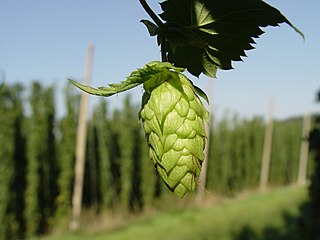Pretty much all alcoholic beverages begin as yeast consuming sugar (called "fermentation"), and creating, primarily, ethanol (CH3CH2OH) and carbon dioxide (CO2) as biproducts.
 |
| Saccharomyces cerevisiae, AKA ale yeast |
An alcoholic beverage that's distilled undergoes a process, usually evaporation and condensation, that separates the ethanol from the water and other chemicals that the yeast produce through fermentation. Depending on the process, the goal can be to create as pure (and consequently flavorless) ethanol as possible (like vodka), or retain some of the other chemicals that add flavor (as in whiskey or brandy). Some amount of water (usually 60-80%) and other flavorings (including those that come from barrel aging) can be added to the distillate.
Working backwards from fermentation, the next thing that distinguishes alcoholic beverages is the source of the sugar, whether from sugar cane (rum), honey (mead), or fruit (wine and fruit brandies). Sugar can also come from breaking down starches, which are long chains of sugars. Plants store sugars as starches in order to prevent other organisms like bacteria, mold, and yeast, from eating them; and then use enzymes to break the chains back apart into sugars when they need to consume them for energy. (Some plants keep sugars available for other organisms to consume, such as in their flowers or fruit, to lure/reward them for pollinating the plant or spreading its seeds.) Starches are broken down into sugars to make vodka (potatoes and other things), sake (rice), and, of course, beer.
Traditionally, barley has been used for making beer, because of its high protein content, and because its kernels contain a large amount of the enzymes necessary to convert its starch back into sugar.
 |
| 2-row and 6-row barley |
To begin the brewing process, the brewer soaks barley in hot water to reactivate the enzymes and release its sugar. This process is called mashing. The brewer then runs water through the mash and collects the run-off sugar water (called wort). The mineral content of the brewery's water affects the mash process and the flavor of the beer.
Next, the wort is then boiled, and during the boil the last major component of beer, hops, are added.
 |
| Hops |
The boiled wort is then cooled down to a suitable temperature, the yeast is added, and fermentation begins. The strain of yeast used will add certain flavor characteristics (such as the esters and phenols previously mentioned). The brewer can add other things at this point - fermentables like fruit, or spices.
After a few days, the yeast will have consumed most of the sugar in the wort and turned it into alcohol, completing the primary fermentation. The brewer then moves the beer off the remnants of the yeast, and may let it age for a while, to let the remaining yeast finish fermenting any remaining sugar and metabolize other byproducts of the fermentation to improve the flavor of the beer, in a secondary fermentation. The brewer can also add hops (called dry hopping) to add more aromatic hop character to the beer. The beer can be aged to allow even more chemical changes to take place, or to gain additional flavor, for example by barrel-aging.
Finally, the beer is bottled or kegged. Most breweries pasteurize their beer to kill any remaining yeast, or bacteria that have snuck in, to prevent spoilage. In this case, the brewery will pump CO2 into the bottle to carbonate the beer. Some breweries allow yeast to live and continue to make changes to the flavor of the beer over time, called bottle conditioning. In this case, as the yeast consumes residual sugar in the beer, it will produce the CO2 that carbonates the beer,
So, that's what beer is. Talking about how different combinations of water, grains, hops, yeast, and other things create porters, stouts, pale ales, IPAs, hefeweizens, pilsners, marzens, lambics, and all the other myriad styles of beer - will have to wait for another day!
No comments:
Post a Comment